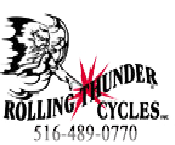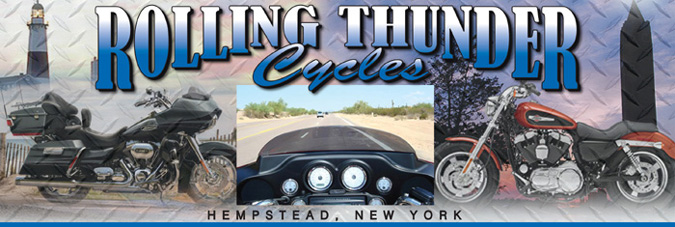
|
|
|
|
|
|
|
|
|
|
|
|
|
|
|
|
|
|
|
|
|
|
|
|
|
|
|
|
|
|
|
|
|
|
Search by Keyword

There is a lot of information below collected from the Motorcycle Safety Foundation, the American Motorcyclist Association, our tire manufactures and distributors and 150 years of combined riding among all of us and this has only scratched the surface. It is worth the time to read all of it and even do some research on your own.
Running the proper air pressure in your motorcycle tire is critical. With relatively small contact patch, and just two wheels connecting you and your bike to the road, the wrong air pressure can have a large effect on safety, performance, tire life, fuel mileage and even suspension and steering.
There is a certain amount of deflection in the tire profile that's optimal for balancing, road grip, handling, comfort and durability. To achieve the optimum deflection- sidewall flexing where the tread comes into contact with the road- it's up to you, the owner of the motorcycle, to make sure to keep the tires inflated correctly. Optimum deflection is based upon the tire's construction, the load (including the weight of the driver, passenger, and touring gear) and the intended use of the motorcycle.
Too much air pressure will stiffen the sidewall causing not enough deflection and the tire could be damaged if it hit a pothole or other object at speed. You will also have a smaller contact patch, which could cause you to have less traction, especially in the wet. Your bike will also be less comfortable.
Running too little air pressure is even worse with rapid tire wear, cupping, poor fuel economy, poor handling and bad traction in the wet. A tire that is underinflated by 4 PSI has lost 80 pounds of load-carrying capability. It is important both to run correct tire pressure and to not overload your bike.
Jeff Johnston, product manager with Pirelli, says "The rider ( or installing dealer) should make sure the installed tire is approved but the tire manufacturer for your motorcycle and that it meets or exceeds the load and speed rating of the original equipment tire." Johnston says, "Respect the maximum load approved for the bike as stated in the vehicle owner's manual and follow this to prevent overloading. Check your owners manual for air pressure values and never run the max pressure that is on the sidewall of the tire, unless the load that you are carrying dictates it".
If you are using a replacement tire and not the OEM (original equipment manufacturer) tire you may want to check the tire manufactures web site or call us for proper tire inflation. For example if a replacement tire has a load index of "C" and that means the maximum pressure as stated on the sidewall is 50 PSI, but the OEM tire may only be a load range "B" which has a max pressure of 40 or 42 PSI the owner's manual specifications do not apply!
Tire pressure is not affected by weather, but it is affected by air temperature. Every 10 degree change in temperature will change your air pressure 1 pound. So if you adjusted your tires in the summer and now the temperature has dropped 40 degrees you have lost 4 pound of pressure. The same for cold to hot, a 30 degree temperature increase has raised your tire pressure 3 pounds
The bottom line is to take the time to check your tire's air pressure. The best case is to check tire pressure before you ride. The Motorcycle Safety Foundation has a pre-ride inspection checklist, and tire pressure is the first thing to check on that list.

There is a certain amount of deflection in the tire profile that's optimal for balancing, road grip, handling, comfort and durability. To achieve the optimum deflection- sidewall flexing where the tread comes into contact with the road- it's up to you, the owner of the motorcycle, to make sure to keep the tires inflated correctly. Optimum deflection is based upon the tire's construction, the load (including the weight of the driver, passenger, and touring gear) and the intended use of the motorcycle.
Too much air pressure will stiffen the sidewall causing not enough deflection and the tire could be damaged if it hit a pothole or other object at speed. You will also have a smaller contact patch, which could cause you to have less traction, especially in the wet. Your bike will also be less comfortable.
Running too little air pressure is even worse with rapid tire wear, cupping, poor fuel economy, poor handling and bad traction in the wet. A tire that is underinflated by 4 PSI has lost 80 pounds of load-carrying capability. It is important both to run correct tire pressure and to not overload your bike.
Jeff Johnston, product manager with Pirelli, says "The rider ( or installing dealer) should make sure the installed tire is approved but the tire manufacturer for your motorcycle and that it meets or exceeds the load and speed rating of the original equipment tire." Johnston says, "Respect the maximum load approved for the bike as stated in the vehicle owner's manual and follow this to prevent overloading. Check your owners manual for air pressure values and never run the max pressure that is on the sidewall of the tire, unless the load that you are carrying dictates it".
If you are using a replacement tire and not the OEM (original equipment manufacturer) tire you may want to check the tire manufactures web site or call us for proper tire inflation. For example if a replacement tire has a load index of "C" and that means the maximum pressure as stated on the sidewall is 50 PSI, but the OEM tire may only be a load range "B" which has a max pressure of 40 or 42 PSI the owner's manual specifications do not apply!
Tire pressure is not affected by weather, but it is affected by air temperature. Every 10 degree change in temperature will change your air pressure 1 pound. So if you adjusted your tires in the summer and now the temperature has dropped 40 degrees you have lost 4 pound of pressure. The same for cold to hot, a 30 degree temperature increase has raised your tire pressure 3 pounds
The bottom line is to take the time to check your tire's air pressure. The best case is to check tire pressure before you ride. The Motorcycle Safety Foundation has a pre-ride inspection checklist, and tire pressure is the first thing to check on that list.

Some riders eventually reduce the frequency of air pressure checks to
at least once a week and before long trips, but will still visually inspect tires before each ride. Inspect the tire tread depth to ensure that adequate tread remains. Tires have small wear bars molded into the tread grooves. When the tread is worn down to the level of the wear bars (indicating 1/32 inches of tread remaining), the wear bars become exposed and
the tire should be replaced. New York State Safety Inspection requires 2/32 of an inch to pass inspection so you should be changing your tires, before hitting the wear bar or sooner. Although it may look like there is a sufficient amount, it may not be enough to maintain traction in wet conditions. The deep grooves in fresh tires help channel water away from the contact patch, and worn tires are thinner and easier to puncture. For a quick check, if you insert a penny into a groove in the center of your tire, 2/32 of an inch is right at the top of Lincoln’s head. In addition to tread depth, glance over the tires’ surface for any evidence of uneven wear, cuts, embedded objects, bulges, or sidewall cracking.
Every time you ride, the tires go through a “heat cycle” as they go from ambient to operating temperature and back down again. Each successive heat cycle slowly hardens the tire. Similarly, as tires age, chemical reactions cause the rubber to harden, even during nonuse. Whether through heat cycles or aging, the tire’s surface becomes less spongy and less able to interlock with the protrusions and pores in the road surface. (If you have an old tire and a new tire, you can press your fingernail into the surfaces of each to see the difference in how they react.) Tires can also absorb petroleum-based fluids from the road, which can further deteriorate the rubber. So, tires eventually have to be replaced, even if they have plenty of tread left. And don’t take a chance on buying used tires; you don’t know how many heat cycles they’ve gone through. This also means that when you buy a used motorcycle, you should thoroughly inspect the tires, and replace them if their condition is questionable. To clean your sidewalls, use a mild soap solution and rinse off with plain water. Do not use chemical cleaners or protectants, as they may degrade the rubber and cause cracks in the sidewalls
at least once a week and before long trips, but will still visually inspect tires before each ride. Inspect the tire tread depth to ensure that adequate tread remains. Tires have small wear bars molded into the tread grooves. When the tread is worn down to the level of the wear bars (indicating 1/32 inches of tread remaining), the wear bars become exposed and
the tire should be replaced. New York State Safety Inspection requires 2/32 of an inch to pass inspection so you should be changing your tires, before hitting the wear bar or sooner. Although it may look like there is a sufficient amount, it may not be enough to maintain traction in wet conditions. The deep grooves in fresh tires help channel water away from the contact patch, and worn tires are thinner and easier to puncture. For a quick check, if you insert a penny into a groove in the center of your tire, 2/32 of an inch is right at the top of Lincoln’s head. In addition to tread depth, glance over the tires’ surface for any evidence of uneven wear, cuts, embedded objects, bulges, or sidewall cracking.
Every time you ride, the tires go through a “heat cycle” as they go from ambient to operating temperature and back down again. Each successive heat cycle slowly hardens the tire. Similarly, as tires age, chemical reactions cause the rubber to harden, even during nonuse. Whether through heat cycles or aging, the tire’s surface becomes less spongy and less able to interlock with the protrusions and pores in the road surface. (If you have an old tire and a new tire, you can press your fingernail into the surfaces of each to see the difference in how they react.) Tires can also absorb petroleum-based fluids from the road, which can further deteriorate the rubber. So, tires eventually have to be replaced, even if they have plenty of tread left. And don’t take a chance on buying used tires; you don’t know how many heat cycles they’ve gone through. This also means that when you buy a used motorcycle, you should thoroughly inspect the tires, and replace them if their condition is questionable. To clean your sidewalls, use a mild soap solution and rinse off with plain water. Do not use chemical cleaners or protectants, as they may degrade the rubber and cause cracks in the sidewalls
For information on tires for storage click here!
Rolling Thunder Cycles Inc. is not affiliated with Harley-Davidson®
All logos, brands, images and trademarks are the property of their respective trademark holders.


